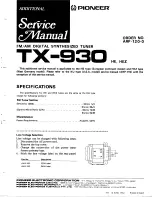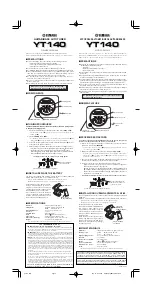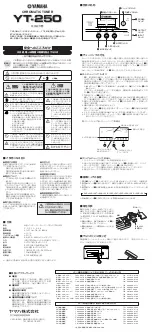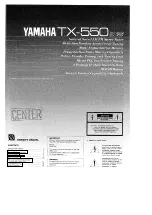
- 6 -
CONTROLS AND FUNCTIONALITY
(Letters correspond with image on the following page)
A.
POWER –
Turns the power (AC) on and off to your tuner, with the optional
remote system this switch must be left in the “OFF” position.
B.
STEREO –
Switches your tuner from Stereo to Mono and vice-versa. Switching
to Mono will often clean up noisy stereo transmissions and aid in delivering
quiet listening to weaker signals.
C.
I.F. BANDWIDTH –
When
BW 1
is selected your tuner is in the wide IF
(Intermediate Frequency) bandwidth setting. This setting produces the best
sound possible where strong adjacent channel interference is not an issue.
When
BW 2
is selected the tuner is placed in the “Narrow” bandwidth setting,
this setting produces optimal sound performance where adjacent channel
interference is a factor.
D.
MUTE –
In the “ON” position, a limit is now placed on your tuner. While scaling
up and down the FM dial, weak stations will be overlooked so that no alarming
noises will be heard while looking for programs. We recommend that with the
optional remote system you leave the Mute switch in the “ON” position.
E.
TUNING KNOB –
Rotating this knob allows you precise control of the fine
tuning of the FM signal you are listening to. Slight de-tuning of the tuner may
aid in eliminating measures of multi-path or other atmospheric conditions that
may affect the sound quality of your reception.
DISPLAYS AND METERS
(Letters correspond with image on the following page)
F.
MULTI-PATH METER –
This meter indicates multi-path (multi-path is the same
FM signal being received by your antenna and tuner at two different time
intervals). Your multi-path meter should read zero. If this meter reads more
than zero, move your antenna to a different location or rotate your antenna so
that your meter reads zero. If this does not correct the problem a better or
different antenna system may be required, please visit the
Reception
Techniques
section in this manual.
G.
CENTER TUNER METER –
Indicates the setting of the tuners front end in
relation to the station you are tuning to. In normal situations this needle should
be tuned to the central point of this meter.


































